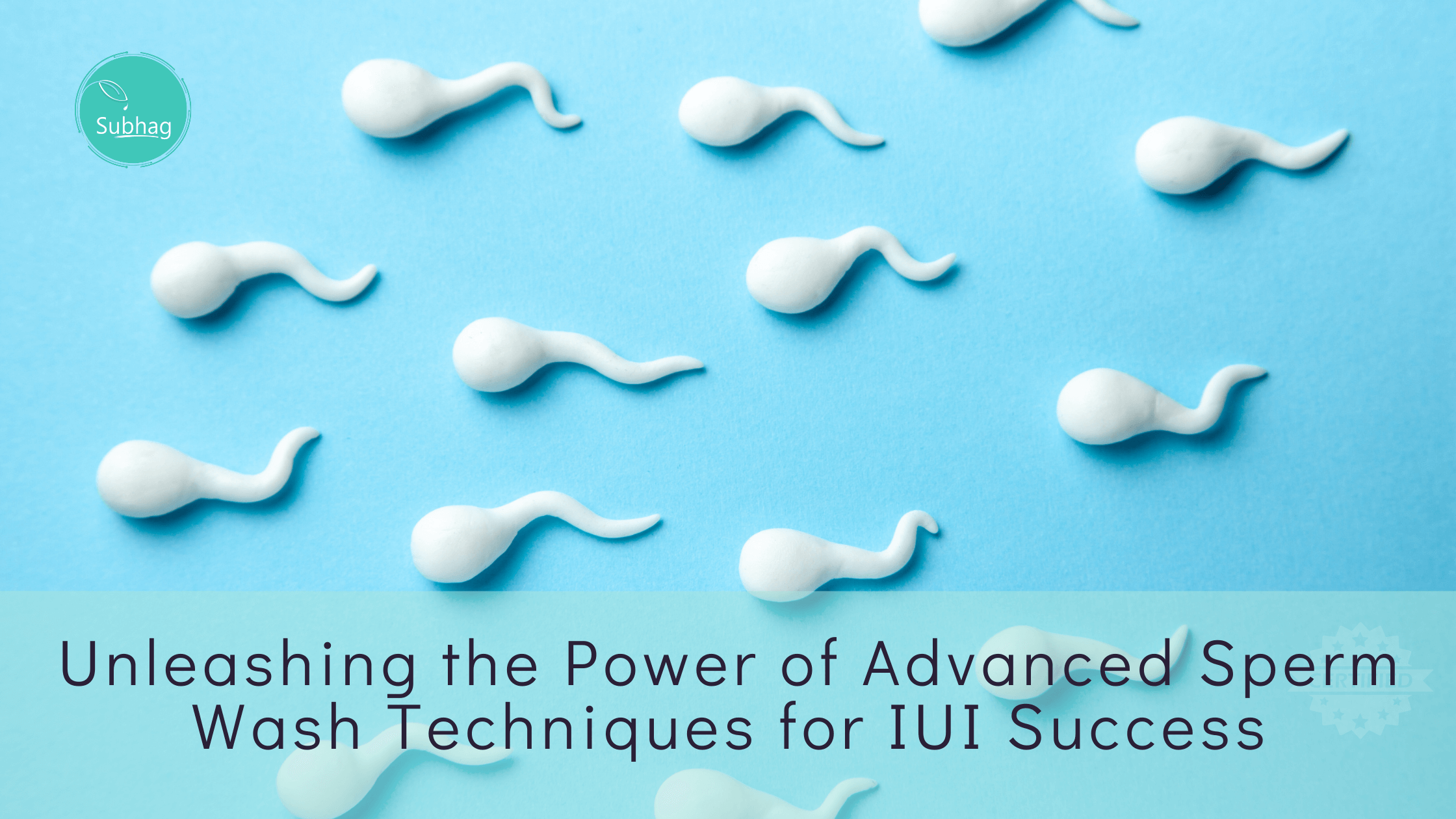Are you considering Intrauterine Insemination (IUI) as part of your fertility treatment?
If so, it’s important to understand how sperm washing can improve the success rates of IUI.
Sperm washing is a process that entails removing seminal fluid, separating healthy sperm from dead or abnormal ones, and concentrating the remaining healthy sperm for fertilization.
In this blog, we’ll take a deep dive into the sperm-washing process and explain its purpose. We’ll also discuss the quality control measures, timing and coordination, clinical settings, legal and ethical considerations, and techniques used for sperm washing in IUI procedures.
By the end of this post, you’ll have a thorough understanding of how sperm washing can benefit your IUI treatment and what to consider when searching for skilled andrologists and IUI techniques.
Understanding Intrauterine Insemination (IUI)
Intrauterine Insemination (IUI) is a less invasive and cost-effective fertility treatment involving the placement of sperm in the uterus to aid fertilization.
It is often recommended for unexplained infertility, low sperm count, or poor motility.
This procedure enhances the sperm’s proximity to the fallopian tube, thereby increasing the chances of pregnancy. IUI can be performed with or without fertility drugs, depending on individual fertility conditions. This is a less invasive and more affordable alternative to IVF.
Importance of IUI in fertility treatment
The importance of IUI in fertility treatment lies in facilitating easier access to the fallopian tube for fertilization.
This procedure benefits couples with unexplained infertility and ensures high-quality sperm samples for increased chances of fertilization.
IUI also offers a low risk of multiple pregnancies, making it a safer option for certain fertility conditions. Its simplicity, cost-effectiveness, and minimal discomfort make it a preferred choice for many.
Enhancing chances of fertilization with IUI
To optimize the sperm sample for fertilization, sperm washing ensures the removal of white blood cells, prostaglandins, and other debris.
The IUI procedure, when timed correctly with ovulation, maximizes the chance of fertilization. Evaluation of sperm count, motility, and morphology is essential for selecting the healthiest sperm for insemination.
Additionally, using donor sperm widens options for couples facing male infertility challenges. Finally, performing IUI during a natural cycle reduces the risk of potential side effects.
Deep Dive into the Sperm Washing Process
The sperm washing process for IUI success involves precise techniques to avoid sperm damage and optimize the chance of pregnancy.
Density gradient centrifugation separates motile and healthy sperm from the semen sample, ensuring the best sperm are utilized for insemination.
Washing and resuspension of sperm aim to eliminate unnecessary substances, improving the sperm’s readiness for fertilization. This process also screens for any potential male infertility issues, ensuring the best sperm are used.
Collection of sperm: The first step
The timing of ejaculation is critical to ensure the freshness and viability of the sperm sample for insemination.
Collection at a fertility clinic using donor sperm is an option for male infertility challenges. This minimizes sperm exposure to harmful cervical mucus, enhancing fertility. Immediate sperm washing follows collection, preparing the sample for insemination.
The process optimizes the sample for fertilization, improving the pregnancy rate. During the insemination procedure, you’ll lie down on the exam table. Your healthcare provider will insert a speculum into your vagina — similar to what happens during a Pap test.
Next, a catheter is inserted through your cervix into your uterus. Finally, your healthcare provider injects the washed sperm sample into your uterus.
Density Gradient Centrifugation: Separating the best
In density gradient centrifugation, healthy, motile sperm are separated for insemination, eliminating debris and poor-quality sperm.
This technique yields a washed sperm sample with improved motility and viability, boosting the chances of successful artificial insemination.
By selecting top-quality sperm, this method contributes to an increased pregnancy rate, addressing the cause of infertility and enhancing the overall success of IUI procedures.
Washing and Resuspension: Preparing for fertilization
In the process of sperm washing for IUI success, the meticulous washing and resuspension of sperm ensure the removal of impurities, white blood cells, and prostaglandins.
This technique optimizes the sperm sample, enhancing motility, count, and overall quality for fertilization.
By preparing the sperm for direct placement into the uterus, washing and resuspension significantly improve the chances of successful fertilization, contributing to the overall success rates of intrauterine insemination.
The Purpose of Sperm Wash
Eliminating seminal fluid safeguards against adverse reactions in the uterus, preparing a pure, contaminant-free sperm sample for insemination.
Concentrating motile sperm increases the likelihood of successful fertilization, optimizing the chance of pregnancy and enhancing fertility potential.
Sperm washing for IUI success maximizes the chances of successful fertilization, contributing to a higher pregnancy rate.
Elimination of Seminal Fluid: Safeguarding against adverse reactions
Safeguarding against adverse reactions during IUI involves removing seminal fluid to minimize potential allergic or inflammatory responses.
This process ensures a pure, concentrated sperm sample for insemination, free from unnecessary fluids. Eliminating seminal fluid optimizes fertility chances by reducing the risk of adverse reactions or discomfort in the uterus.
The technique contributes to the success rates of IUI treatment, enhancing the chance of fertilization.
Concentration of Motile Sperm: Boosting fertilization chances
Boosting fertilization chances through intrauterine insemination involves concentrating motile sperm, ensuring the highest-quality sample for direct placement into the uterus.
This process selects healthy, motile sperm, increasing the chance of a successful pregnancy.
The enhanced fertility potential of the sample maximizes the chance of natural conception and contributes to the overall success rates of IUI, ultimately maximizing the chance of pregnancy.
Minimization of Contaminants: Ensuring a safe uterus environment
Ensuring a safe uterine environment is vital for successful fertilization.
Sperm washing plays a crucial role in minimizing potential contaminants, and promoting a healthy uterus for insemination. By eliminating impurities and harmful substances, the procedure creates a clean and safe environment, reducing risks and safeguarding against adverse reactions.
This meticulous process ensures an ideal, contamination-free setting for conception, enhancing the chances of pregnancy.
Quality Control Measures
Stringent quality checks throughout sperm washing ensure optimal fertility outcomes, adhering to high efficacy and reliability standards.
These measures guarantee the effectiveness of the wash technique, maintaining high success rates. Rigorous quality control is implemented to select the best spermatozoa for artificial insemination, contributing to a higher pregnancy rate.
The process undergoes viability assessment and microbiological testing, ensuring safe and efficient procedures.
Viability Assessment: Selecting the best
When performing sperm washing, a viability assessment is crucial in selecting the most viable sperm for insemination. This involves evaluating sperm for motility and count to choose the healthiest for successful fertilization.
Careful selection of the best sperm maximizes fertility prospects by optimizing the chances of conception. The process identifies and selects the most viable sperm, ensuring the best possible outcome.
Microbiological Testing: Guaranteeing safe procedures
Guaranteeing safe procedures through microbiological testing is essential in the sperm-washing process for artificial insemination.
This rigorous testing ensures the absence of harmful microorganisms, minimizing health risks and optimizing pregnancy rates.
By conducting thorough microbiological testing, the procedure maintains a sterile and safe environment, safeguarding against potential contaminants.
The testing also addresses the cause of infertility and ensures a secure wash technique without compromising safety.
Timing and Coordination
Synchronizing sperm washing with ovulation maximizes the chances of fertilization, strategically aligning with the ovulation cycle for optimal results.
This coordination enhances the likelihood of successful fertilization by hitting the fertility window with precision. By syncing with ovulation, sperm washing strategically maximizes the chances of conception.
Synchronization with Ovulation: Maximizing fertilization chances
Maximizing the chances of fertilization, sperm washing synchronizes with ovulation to ensure precise timing for successful conception.
By coordinating with ovulation, this process optimizes the fertility window, enhancing opportunities for successful insemination.
Aligning with ovulation increases the likelihood of successful conception through planned timing, ultimately maximizing the chances of successful fertilization.
This strategic synchronization significantly boosts the pregnancy rate in artificial insemination procedures.
Precision in Insemination Timing: Hitting the fertility window
Aligning with the peak fertility period, precision in insemination timing ensures optimal fertilization chances through meticulous scheduling.
By hitting the fertility window, this process maximizes successful conception prospects. Sperm washing synchronizes with ovulation, coordinating insemination precisely for enhanced fertility.
This strategic approach increases the likelihood of successful fertilization within the fertility window, optimizing the opportunities for conception.
Clinical Settings for Sperm Washing
Sperm washing is carried out in clinical facilities, maintaining sterile conditions for the process.
This specialized procedure is conducted in clinical environments, ensuring the highest standards of care and a controlled, safe, and sterile environment.
It is performed by experienced reproductive specialists who work to minimize contamination risks and provide expert care tailored to each patient’s needs.
The controlled setting in a clinical environment ensures the safety and success of the sperm-washing process.
Importance of Reproductive Specialists
Reproductive specialists oversee and conduct sperm washing with expert care and precision, ensuring optimal fertility outcomes.
The involvement of these specialists guarantees the highest level of expertise in the wash technique and the success of the procedure.
Their crucial role in ensuring the success of artificial insemination and pregnancy rate cannot be overstated. The expertise of reproductive specialists is essential for maximizing the chances of successful fertilization.
Ensuring sterile conditions: Minimizing contamination risks
Maintaining a sterile environment during sperm washing is crucial for minimizing contamination risks. By prioritizing sterile conditions, the procedure ensures the safety and effectiveness of intrauterine insemination (IUI).
Sperm washing emphasizes the need for sterile environments to mitigate the potential risks of contamination, safeguarding the success of IUI procedures.
This focus on sterile conditions is essential for safe and successful artificial insemination, optimizing pregnancy rates.
Legal and Ethical Considerations
Sperm washing for IUI upholds legal and ethical standards, guaranteeing a contaminant-free sample. This process safeguards against infection transmission, prioritizing the woman’s health during IUI.
By isolating healthy sperm and adhering to strict guidelines, high-quality samples are prepared, aligning with infertility treatment ethics. Legal and ethical considerations reinforce the safety and success of IUI procedures.
How does sperm washing improve IUI success rates?
Sperm washing plays a crucial role in improving IUI success rates.
By removing impurities and dead sperm, it concentrates healthy sperm, enhancing the chances of successful fertilization.
Additionally, it reduces the risk of infection transmission during the procedure. Studies have shown significant improvements in success rates with washed sperm in IUI procedures.
Techniques Used for Sperm Washing in IUI Procedures
Density gradient centrifugation is employed to separate and concentrate sperm from the semen sample, while the swim-up technique isolates motile sperm by allowing them to swim up through a medium.
Additionally, washing with culture media rinses the sperm with a special culture medium to remove unwanted substances and debris.
The process also involves assessing sperm morphology for abnormalities and implementing quality control measures to ensure the final product meets specific quality standards for IUI.
Density-gradient centrifugation method
When preparing for intrauterine insemination, the density-gradient centrifugation method becomes crucial.
This technique effectively separates good-quality sperm from poor-quality sperm and other unwanted substances in the semen, significantly improving IUI success rates.
By layering the semen sample on a density gradient solution and spinning it in a centrifuge, the process concentrates the highest quality sperm for washing and preparation. This method minimizes the risk of complications and enhances pregnancy rates.
Swim-up technique
The swim-up technique, a popular method in artificial insemination, separates motile, healthy sperm from the semen sample, discarding the rest of the fluid.
It significantly improves pregnancy rates by delivering a concentrated, high-quality sperm sample directly to the uterus.
Moreover, it reduces the risk of HIV transmission during fertility treatments. Consulting with a fertility specialist is essential for selecting the most suitable wash technique for individual needs.
Microfluidic sperm sorting
Microfluidic sperm sorting, a modern technique for preparing sperm for intrauterine insemination (IUI), involves capturing individual sperm cells in microchannels and sorting them based on motility and morphology.
This method improves the success rate of IUI procedures by selecting the most viable sperm and benefits couples using donor sperm.
It offers greater control and promising outcomes in fertility treatments, enhancing the chances of successful artificial insemination.
Advantages and limitations of each technique
While both density gradient centrifugation and the swim-up technique have their unique benefits, they also come with certain limitations.
Density gradient centrifugation yields a higher concentration of motile sperm, improving the chances of successful artificial insemination.
On the other hand, the swim-up technique separates motile sperm from immotile sperm and debris, enhancing the overall pregnancy rate.
However, the cost of the wash technique, potential damage to sperm, and varying success rates due to individual fertility factors must be considered.
Understanding Sperm Washing for IUI Success
Understanding the Wash Technique:
Sperm washing involves separating the best spermatozoa from the seminal fluid, contaminants, and urine.
This allows the concentration of motile sperm to be resuspended in a smaller volume, enhancing its quality for artificial insemination. The process also assists in uncovering DNA fragmentation, which impacts the success rates of IUI procedures.
Utilizing advanced techniques like microfluidic sperm sorting contributes to increased pregnancy rates and improved outcomes in subfertile couples.
Benefits of sperm washing before IUI
By preparing sperm wash for intrauterine insemination, the procedure ensures the elimination of seminal fluid, maximizing the concentration of motile sperm.
This safeguards against adverse reactions and boosts fertilization chances, contributing significantly to IUI success rates.
Additionally, it minimizes contaminants, creating a safe uterine environment and enhancing the overall success of the procedure.
Success rates and considerations for each method
Considering the success rates and various considerations for each method is crucial when undergoing artificial insemination.
Factors such as pregnancy rate, cause of infertility in the female or male partner, wash technique used, and the quality of the spermatozoa are all critical in determining the success of the procedure.
Understanding these aspects, along with proper guidance from an expert, can significantly enhance the chances of a successful intrauterine insemination (IUI) procedure.
Ensuring Success with Skilled Andrologists and IUI Techniques
Skilled andrologists are pivotal for successful sperm washing in IUI. Their expertise directly influences semen sample preparation, impacting pregnancy rates.
Reliable andrologists ensure proper sperm wash technique, critical for overcoming male partner infertility issues like poor motility or DNA damage.
The proficiency of andrologists directly affects IUI success, making their experience essential for optimizing artificial insemination with mature eggs.
Understanding the importance of skilled andrologists in IUI sperm preparation
Reliable andrologists play a vital role in ensuring the quality of washed sperm samples for IUI.
Their expertise directly influences the effectiveness of washed sperm, crucial for successful IUI conception. Skilled andrologists are essential for achieving optimal sperm washing results, greatly impacting IUI success.
The proficiency of andrologists in sperm preparation is key, highlighting their crucial role in the entire process.
Factors that can affect the success of IUI, including sperm count and motility
Optimal sperm count and motility play a crucial role in determining the success rates of IUI procedures.
The chances of conception in IUI are significantly influenced by sperm count and motility, making them pivotal factors for successful outcomes.
High success rates in IUI are dependent on sperm count, motility, and overall sperm health, highlighting their vital importance in achieving successful intrauterine insemination.
The Role of proper Timing and preparation in IUI Success Rates
Proper timing and meticulous preparation are integral to IUI success rates. Achieving optimal success rates in IUI requires precise timing and thorough preparation.
Successful IUI outcomes are closely linked to the precise timing of insemination.
The success of IUI is dependent on careful timing and thorough preparation. Strategically planned timing and meticulous preparation are crucial for achieving high success rates in IUI.
Frequently Asked Questions
How does sperm washing improve the chances of successful IUI?
Sperm washing improves IUI success by removing dead sperm, bacteria, and prostaglandins. It concentrates healthy sperm, increasing fertilization chances.
Gender selection is possible as it separates male and female sperm. Overall, sperm washing enhances the quality and quantity of viable sperm for IUI.
Can certain lifestyle factors impact the success of IUI?
Certain lifestyle choices can affect the success of IUI. Factors like smoking, excessive alcohol consumption, and a poor diet may reduce the chances of success.
Maintaining a healthy weight, exercising regularly, and reducing stress levels can improve the likelihood of a successful IUI.
Inform your doctor about any medications or supplements you are taking that could impact the outcome.
Can donors use these same sperm preparation techniques?
Donors can use the same sperm preparation techniques for IUI.
Sperm washing is a standard procedure that improves the success rates of IUI by removing impurities and concentrating healthy sperm.
However, donors must undergo rigorous screening tests before their sperm can be used for IUI.
Conclusion
Sperm washing is a crucial process in ensuring the success of intrauterine insemination (IUI).
It involves the collection, separation, and preparation of sperm to be used in the procedure.
By eliminating seminal fluid, concentrating motile sperm, and minimizing contaminants, sperm washing significantly increases the chances of fertilization and a successful pregnancy.
Quality control measures such as viability assessment and microbiological testing further guarantee the safety and effectiveness of the procedure.
Timing and coordination with ovulation are key factors in maximizing fertilization chances.
It is essential to undergo sperm washing in a clinical setting, under the supervision of reproductive specialists, to ensure sterile conditions and minimize contamination risks.
Different techniques, such as density-gradient centrifugation, swim-up, and microfluidic sperm sorting, can be used for sperm washing, each with its advantages and limitations.
Understanding the benefits and success rates of each method is crucial in achieving IUI success.
To ensure the best results, it is important to consult skilled andrologists who specialize in IUI sperm preparation.
Factors such as sperm count, motility, and proper timing and preparation play a significant role in the success of IUI.
So, make sure you seek professional guidance for a successful IUI procedure.
If you found this information helpful, don’t forget to share it on social media to spread awareness about the importance of sperm washing in IUI success.





